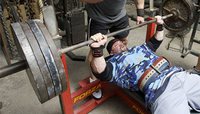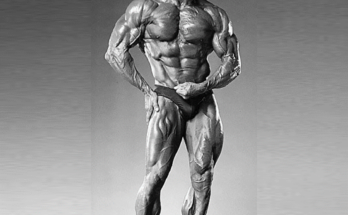
If your opposing muscles are out of whack, so too will you be
By Jim Stoppani, PhD
You can’t get big and strong by sitting on your glutes while recovering from an injury, so injury prevention should be a high priority. Many sports medicine experts recommend balancing the strength of opposing muscle groups, such as quads and hamstrings, biceps and triceps and chest and back.
Many hamstring injuries are a result of the relative weakness of hamstrings in relation to stronger quad muscles. This also applies to chest (pectoralis major) and back (latissimus dorsi) muscles. These major upper-body muscles provide opposing movement at the shoulder joints. An imbalance between the strength of chest and back muscles could predispose you to shoulder-joint injuries.
Scientists at Edith Cowan University in Joondalup, Australia, tested the balance in the strength of chest and back muscles of professional and semiprofessional rugby players. The subjects’ one-rep-max bench press represented chest strength and their one-rep-max chinup (weighted) represented back strength. When the strength-ratio data was pooled, the scientists observed a balanced strength ratio between chest and back muscles that varied by only a few pounds. When data from the professionals (who are better conditioned and have fewer recorded injuries) was separated from that of the semiprofessionals, the pros’ one-rep max for bench presses and chinups were identical to one another. The Aussie scientists believe this may explain the higher conditioning and low-injury incidence among upper-level athletes as opposed to those at a lower level.
Protect your shoulders by testing your one-rep-max strength for bench presses and chinups. If you don’t have a spotter to help you safely test your one-rep max, estimate it by finding a weight with which you can do exactly 10 reps and multiplying that weight by 1.33. For chinups, attach additional weight using a harness around your waist; don’t forget to include your bodyweight in the calculation.
You will also need to set a bench under the chinup bar. This will allow you to start the exercise with your chin above the bar to take advantage of the negative motion before performing the positive motion (pulling). In this way, the exercise more closely resembles a bench press, which starts by lowering the weight before pushing it back up. Your strength should not differ by more than 30 pounds for these two lifts. If it does, focus on improving the weak link.
Reference: D.G. Baker and R.U. Newton, “An analysis of the ratio and relationship between upper body pressing and pulling strength,” Journal of Strength and Conditioning Research, 18(3):594-98, August 2004.
Source: flexonline.com
Post Footer automatically generated by Add Post Footer Plugin for wordpress.
